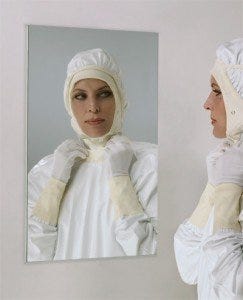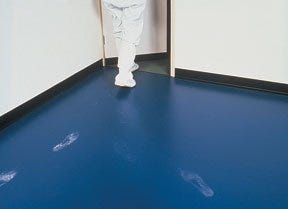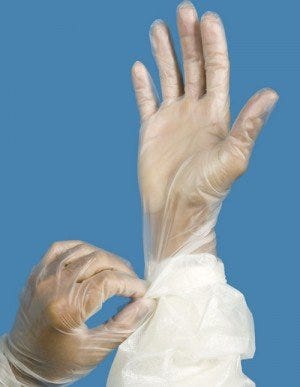It may not come as a surprise that most clean room contaminants begin with employees. Dead skin cells and hair fragments constantly shed from our bodies. And according to one cleanroom expert, viable bacteria emissions from normal activity by an un-gowned individual could release several hundred colony-forming units per minute; therefore, personnel, above all else, should be properly covered before entering the controlled environment. Otherwise, all efforts and costs to maintain your clean room are negated.
With a well-designed gowning area, proper cleanroom garments, and a strict gowning procedure, particle dispersion is minimized and the cleanliness specifications of your contained space remain uncompromised.
Below are seven tips for maintaining an optimal gowning routine. Note, the first two revent most contamination during the gowning process:
1. Gravity affects particles, too
Depending on the layout of your gowning room and whether garments are disposable or reusable, donning and doffing procedures will vary. However, when gowning, always be sure to start from the top and work your way down. The order in which items are donned directly affects cleanliness; a head-to-toe procedure safeguards against particles falling on clean garments or booties.
2. Keep it clean

To avoid the transfer of contaminants, do not touch any clean surfaces with something dirty. Most violations of cleanliness occur when dirty, ungloved hands or an unsterilized floor comes into contact with a garment. All sinks and hand dryers should be equipped with no-touch sensors and donning area surfaces should remain ultraclean to maintain garment cleanliness.
3. Carefully consider specifications
Each cleanroom requires garments that are appropriate for a specific ISO class of cleanliness. Personnel should only wear garments that have been approved for, or are better than, this regulatory level.
4. Cover up!

Any openings must always be covered. Tuck hoods inside of coveralls and wear boots and gloves over pant legs and sleeves. Confirm that all personnel are trained on how to seal gaps between clothing.
5. How does it look?
Ensure that cleanroom clothing fit properly; garments that are too large or too small could increase the number of particulates. Check your appearance in a mirror, or work with a partner to spot escaping hair or jewelry that was not removed.
6. Where can I walk?
 “Dirty” and “clean” areas should be clearly designated within the changing room to avoid confusion or accidental contamination while dressing. All gowning rooms should consist of three designated sections: the non-sterile, pre-gowning area directly outside of the room, where personal items are kept and shoe cleaning occurs; the sterile “dirty” side, where personnel perform necessary activities to prepare for gowning; and the sterile “clean” side, where final steps are taken just before entering the cleanroom. For a more in-depth look at gowning room design, click here.
“Dirty” and “clean” areas should be clearly designated within the changing room to avoid confusion or accidental contamination while dressing. All gowning rooms should consist of three designated sections: the non-sterile, pre-gowning area directly outside of the room, where personal items are kept and shoe cleaning occurs; the sterile “dirty” side, where personnel perform necessary activities to prepare for gowning; and the sterile “clean” side, where final steps are taken just before entering the cleanroom. For a more in-depth look at gowning room design, click here.7. If you must move, do it slowly!
By conserving motion, you reduce turbulent air that may stir up contaminating particles. Cleanroom garments may be made of fabrics that shed, so people emit particles even when sitting still. During the final stages of dressing, it is imperative to move slowly and reduce unnecessary motion. A properly arranged changing room will allow personnel to slow down as they proceed to each station without impeding the overall flow.
Keep these tips in mind when designing your gowning room protocol, specific to your applications. No matter how sterile your controlled space is, careless or inadequate gowning practices could potentially weaken the integrity of your cleanroom. Gowning matters!
Click here for more information on cleanroom gowning procedures.



